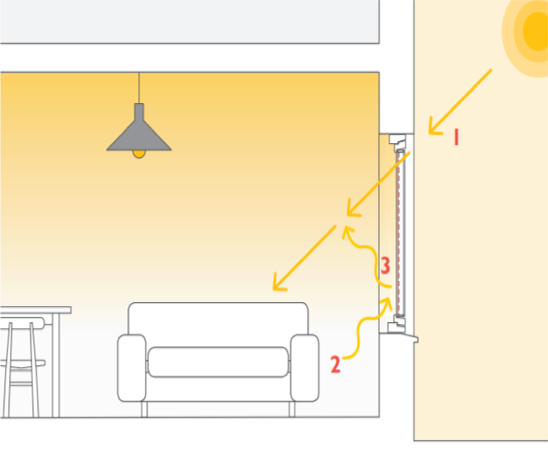Overheating in the indoor environment specifically in domestic homes, schools and healthcare settings has become an increasing concern. Within Europe the European Performance Building Directive outlined a legislative framework to improve the building stock across the EU. The European Commission has published recommendations of how to renovate the building stock for improved energy efficiency whilst considering how to adapt buildings for climate change. These recommendations include the installation of shading products to protect buildings from overheating during warmer weather events and reduce the need for active cooling.
Lord Krebs, who chaired the Committee on the UK Climate Change stated: “A lot of modern flats are built with limited ventilation. We are not designing buildings for preventing overheating. Shading – shutters or awnings – is not costly or difficult to install, it’s just that we’re not doing it.” In non-domestic buildings where active cooling is frequently installed to improve the thermal comfort of occupants, solar shading can be used to reduce energy costs. In domestic buildings the uptake of active cooling is increasing, and passive measures of mitigating overheating should be considered first before considering the installation of active cooling.
Lord Krebs, who chaired the Committee on the UK Climate Change stated: “A lot of modern flats are built with limited ventilation. We are not designing buildings for preventing overheating. Shading – shutters or awnings – is not costly or difficult to install, it’s just that we’re not doing it.”
With years of historically cheap and plentiful energy and limited concern over the environmental consequences of greenhouse gas emissions, combating solar heat gains by simply ‘cranking up’ the air conditioning was considered acceptable. Building modelling programmes were then designed to show the load required. Unfortunately, air conditioning systems are exceptionally energy hungry. Today there is much more financial as well as ethical incentive to consider passive methods of mitigating overheating first, such as the solar heat gain performance of shading.
Cause of Overheating
Overheating is primarily a result of the heat gains associated with occupancy (i.e. occupants themselves, electric lighting and equipment) and incoming solar heat gains. These solar heat gains become trapped in the indoor environment due to the improved insulation and air tightness standards created to reduce heat losses in winter months.
Even though these improvements have been necessary for mitigating heat losses during the winter, they have impacted the resilience of the building stock in warmer weather. Climate change is increasing external air temperatures and the number of warmer weather events. In Europe deaths attributable to heatwaves continue to increase. With the rise in the number of buildings that overheat and the rise in the significant number of associated deaths these contribute to, it is now crucial that buildings consider how passive technologies and design strategies can be incorporated to mitigate overheating.
Assessment of Overheating
When assessing the overheating risk of buildings it is essential that accurate building modelling s used that calculates to EN and ISO standards for shading. Many modelling programmes were designed to calculate air-con loads and do not assess shading. The correct assessment requirements are detailed in our section Campaign for Accurate Simulation of Shading (CASS).
The specification and control strategy chosen for shading products can be vital to a building minimising its energy consumption or maintaining healthy internal temperatures. Therefore, shading must no longer be viewed as a decoration at the window or a visual comfort measure alone, but be considered as integral to the building services package. Frequently in the design process shading is initially included and then value engineered either out of the design or replaced with a lower specification product. To obtain the benefits identified within accurate building simulations the original specification must be included through to build.



